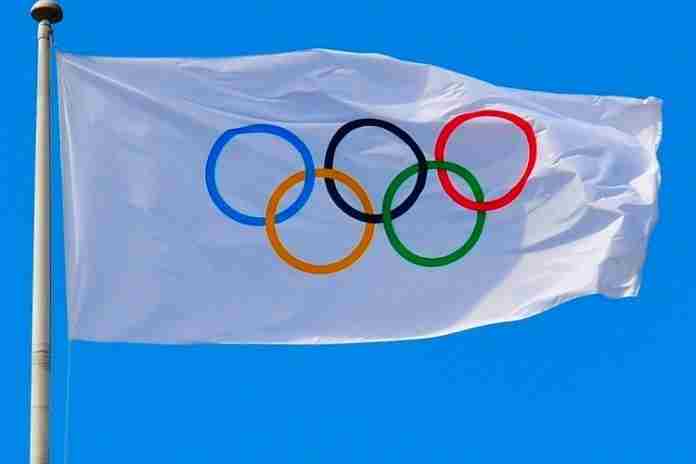The highly-publicized lawsuit brought by the U.S. Women’s National Team was gutted by the opinion of U.S. District Judge Gary Klausner on 1 May, when he granted summary judgment to the U.S. Soccer Federation on the major equal-pay issues in the case and left open for trial only smaller issues on travel and support.
The Women’s National Team has asked for an appeal to the U.S. Ninth Circuit of Appeals, which requires some legal gymnastics, but which will not – even in the best of circumstances – be heard for a while and won’t be decided for more than a year at best.
In the meantime, the calendar moves ahead, and some fortunate timing offers an opportunity for the two sides to go forward … uneasily.
Plaintiff Megan Rapinoe repeated her oft-cited claim “we’re not going to settle; we know what we’re worth,” most recently on CBS This Morning on 4 May, underlining her comments to The New York Times during an interview back in 2019:
“We realize our worth now, and in the past we haven’t quite known what our market value is. If we get to the next round of collective bargaining agreement negotiations, which I think is in two years, and we’re not getting what we want, then we’re going to need to take more serious action than we’ve taken before and not settle for crap.”
Rapinoe noted in 2019 that the Women’s National Team’s collective bargaining agreement will end at the close of 2021. And that’s not the only thing ending about that time:
● The joint broadcast deal with Major League Soccer and the U.S. Soccer Federation, concluded in 2014, will end its eight-year span with the 2022 season. This agreement not only includes MLS games, but also USSF men’s and women’s national team matches between ESPN, Fox Sports and Univision. The MLS has already signaled that discussions on a new agreement are underway
● The USSF’s “marketing representation agreement” with Soccer United Marketing (SUM), which includes sponsorships, expires on 31 December 2022. The federation’s separate marketing agreement with Nike expires on the same date.
● U.S. Soccer has stated its intention to move to new headquarters, as it has outgrown its long-time headquarters building in Chicago. The federation listed 1,228 total employees in its latest tax return, most of whom are working outside of Soccer House, but the need for more space is becoming acute. The USSF moved into its current quarters in 1991.
So within a year following the close of the current Women’s National Team collective bargaining agreement, the television and sponsorship deals which currently support all of the federation’s efforts will end.
Perfect.
As women’s soccer fans know, the USSF – in response to the desire to further develop women’s football in the U.S. – helped form the National Women’s Soccer League (NWSL) in December 2012. According to the USSF’s 2019 financial statements:
“As of the date of these financials, NWSL is owned by its nine member teams. USSF is not a member of NWSL but, pursuant to a 2016 Amended and Restated Management Agreement, serves as the Manager of NWSL LLC and, in this capacity, USSF performs management, governance, operational, administrative, and advisory services for NWSL. The management agreement is currently effective through December 31, 2019. USSF does not receive any management fees or rent from NWSL as part of the arrangement but does receive expense reimbursement.”
This opens up the intriguing possibility for the Women’s National Team – and the men as well – to create their own Limited Liability Companies (LLC) for the purpose of managing their own finances in conjunction with the USSF. (The men aren’t happy either, as its CBA ran out in 2018 and are continuing to play under its terms.)
Each LLC would partner on a 50/50 revenue basis with the USSF. As with the NWSL, the USSF would provide administrative, operational and management services and be reimbursed directly. The USSF’s 50% of revenues would be allocated to its responsibilities for the junior and youth national teams, grass-roots development, rules administration and so on. The Women’s National Team LLC would be responsible for putting on its games, just as is done now.
After all, the men’s and women’s National Teams are essentially separate entities now. Their camps, practices and games are held in different places in different times. The coaching staffs are different, and the support staffs are mostly, if not completely, separate.
Although blanket fees for sponsorship and television rights are currently in effect, let’s have no doubt that broadcasters and sponsors figure out on their own what they can or will spend for every game the men and women’s National Teams play. Now, those negotiations can happen separately.
There will be well-placed criticism of this model from those who believe that selling the whole package will bring more than selling it piecemeal.
That’s not the point. Rapinoe made this clear in her comments on the court ruling to CBS This Morning, saying she was “shocked, to be honest, very shocked, and of course disappointed in this. I didn’t feel like the ruling really captured the heart of what we’re after.”
That’s an activist talking, not a lawyer. The District Court, of course, has to pay attention to the applicable law in this case.
So for the Women’s National Team, forming a separate LLC would allow it to find out its worth directly on the open market. No doubt would remain, as the women would be marketing their own broadcast and sponsorship deals. The USSF would receive 50% for its role as the U.S. National Governing Body and responsible for all of the non-elite elements of football in the U.S.
With its share of broadcast, sponsorship, net ticket sales and merchandise, the USWNT LLC can pay its players whatever it wants (and can afford). It will have to file its own tax returns and so on, but its future will be its own.
Instead of haggling with the USSF, the players can sit across the table from the folks who actually pay the bills: broadcasters and sponsors, as well as dealing directly with where to play, when to play and then renting the stadiums, selling the tickets and putting on the games.
This raises the question of why not just have a separate women’s football federation altogether?
It’s an interesting idea, but would require amending the Ted Stevens Olympic and Amateur Sports Act. The current text, at 36 U.S. §220521(a), states “The [U.S. Olympic & Paralympic Committee] may recognize only one national governing body for each sport for which an application is made and approved, except as provided in section 220522(b) with respect to a paralympic sports organization.”
That’s hardly going to happen now, with the coronavirus pandemic upon us and continuing partisan gridlock that shows no signs of abating.
Same for the case at hand; the chances of a true settlement in Morgan et al vs. U.S. Soccer Federation (2:19-cv-01717) appear very poor and the litigation will play out in court over the next few years (yes, years). In the meantime, the two sides (and the Men’s National Team, too) can move forward on a new basis, one in which the two National Teams will really find out, first-hand, “what we’re worth.”
Rich Perelman
Editor
You can receive our exclusive TSX Report by e-mail by clicking here. You can also refer a friend by clicking here.

























